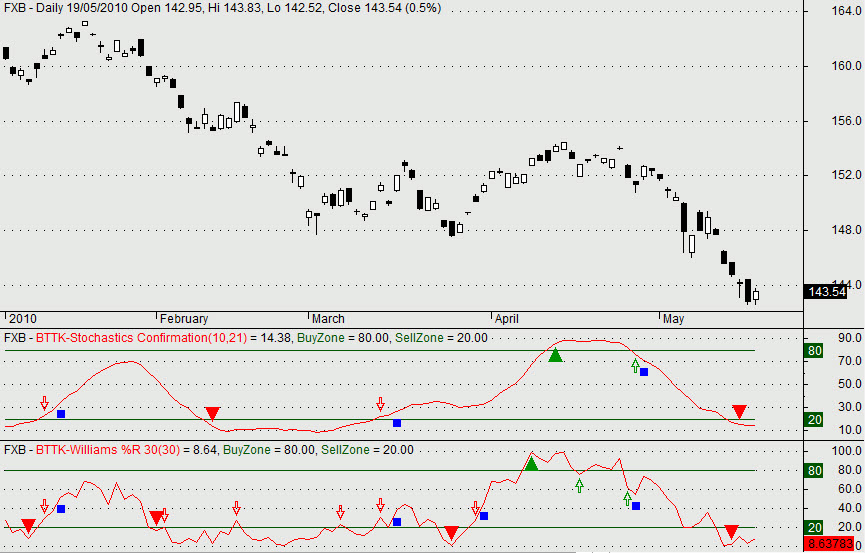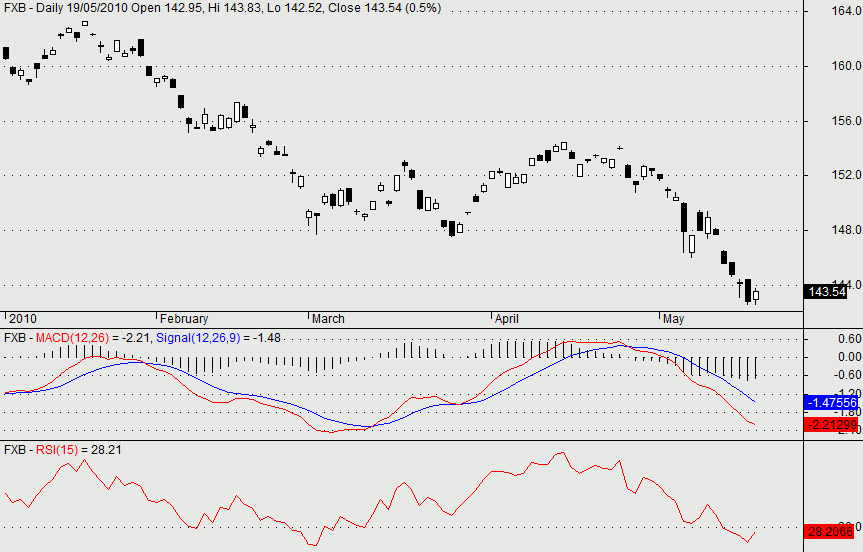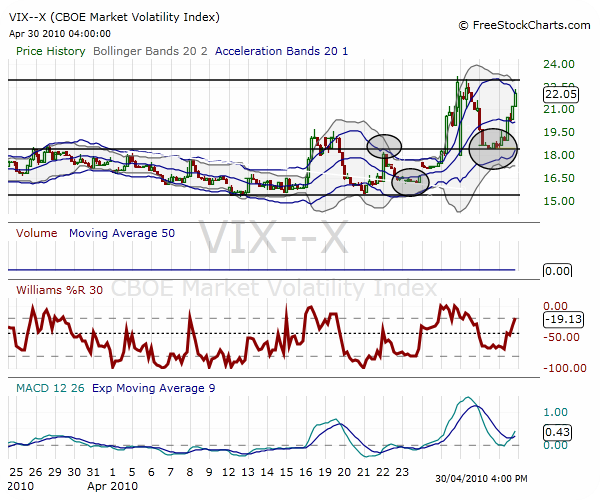So you have already defined in your Trading Plan what type of trade setups you are going to target…
But the truth is, your going to need a combination of both Price Charts with Chart Overlays , and a select few Chart Indicators to help you conduct your Technical Analysis of Stock Trends to find good trade opportunities.
There are hundreds of different Indicators that you can use to help you find the opportunities and trade setups, below are some of the most commonly used in Technical Analysis of Stock Trends.
Chart Indicators
Price Based Indicators
Stochastic Oscillators
The Stochastic Oscillator is one of the most common indicator used by traders. It illustrates the current buying and selling pressures of a stock, based on the current price relative to the high & low range of a defined period. Conventional thinking says readings of the Stochastic Oscillator below 20 is consider to be Oversold and while readings above 80 are considered Overbought.
William %R
William %R is my favourite indicator, and forms the cornerstone of my own Trading System. It is similar to the Stochastic indicator, in that it designed to indicate Overbought or Oversold conditions. If you were to plot both indicators (same period) side by side (as below) you would notice the Williams %R Indicator is not as smooth as the Stochastic Oscillator, and is more sensitive to the price movement.
It is also plotted on a negative scale, and with conventional thinking, readings below -80 is consider to be Oversold and while readings above -20 are considered Overbought. (Though I have adjusted the scale on my charts to be the same as Stochastics)

MACD
MACD or Moving Average Convergence Divergence is design to display strength or weakness, & direction of momentum of price, and therefore is handy for trend following and detecting changes in trends.
MACD is basically the difference between a short term Exponential Moving Average (12-day EMA) and a long term EMA(26-day EMA), then a 9-day EMA of the MACD line is superimposed as the MACD signal line. There is also a histogram plotted around the zero line and each bar represents is calculated by MACD – MACD signal line. The typical setting is 12,26,9
MACD is also commonly traded with MACD Divergence and Crossover techniques
RSI
The RSI or Relative Strength Indicator is a popular momentum oscillator created by Welles Wilder, which also measures overbought and oversold conditions of a security. It basically compares the size of recent gains to the size of recent loses in price of a security and plots it in a range from 0 to 100.
Conventional Technical Analysis would say a reading of above 70 is considered over bought and a reading of below 30 is considered oversold.
RSI is also commonly traded with RSI Divergence & Crossover techniques.
ADX
ADX or Average Directional Movement Index is another indicator created by Welles Wilder. It measures the strength of the current trend, whether that be up or down, but the ADX line itself does not distinguish the direction of the trend.
The ADX is an oscillator that fluctuates between 0 & 100. Readings above 4o indicate a strong trend, and reading above 60 are rare, indicating an unusually strong trend. While readings below 20 indicate a weak trend.
It is also made up of two other primary indicators:
- -DI (Negative Directional Index) – which measures the force of the move down over the set period. (usually red)
- +DI (Positive Direction Index) -which measure the force of the move up over the set period. (usually green)
So when the +DI is above the -DI and ADX is rising this indicated a price is rising or in an uptrend,
And when +DI is below the -DI and ADX is rising this indicated a price is falling or in an downtrend.
The most common setting is the 14-day ADX .

I hope you enjoyed this article, and it helps your Technical Analysis of Stock Trends. Stay tuned for next weeks post.
Cade Arnel
Trend Hunter
www.globaltrendtraders.com 2009-2010


Hi Cade – I started options trading a couple of months ago (still paper trading at the moment) so your article on technical analysis of stock trends is extremely useful. I’ll go back and read parts 1 and 2. Have you written about volatility in any of your articles? If not, maybe consider that for a future post? Thanks for a great read.
.-= Jan Littlehales´s last blog ..Apple Crumble Recipe – in Ten Minutes =-.
Great article Cade – just the right level of detail & the example charts really help visualise what each indicator means. Thanks, I’ll be referring back to this many times as my trading gets moving.
.-= Tim L´s last blog ..Learn Typing =-.
@Tim – Yes its important to know what each indicator is actually telling you. Glad to hear you found this article helpful.
@Jan – No I haven’t yet covered market volatility as yet, though it will definitely by a topic I will cover in the future.